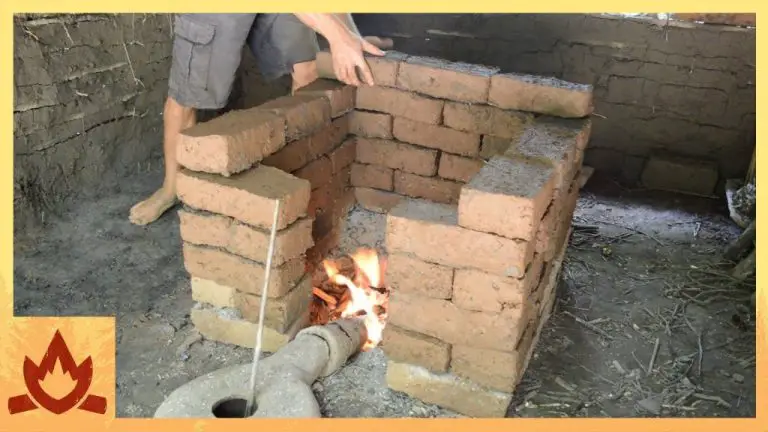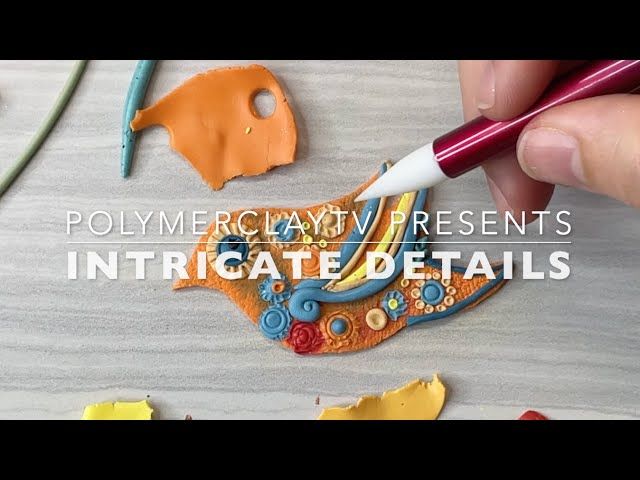Clay Artistry Unlocked: Ideas To Fuel Your Passion
Clay artistry has surged in popularity in recent years. According to research, the global polymer clay market is expected to grow at a compound annual growth rate of 2.9% between 2023-2031, reaching $37.1 billion by 2031. With more people discovering the joys of sculpting and creating with clay, it’s clear this art form is here to stay.
Working with clay allows budding artists to tap into their creativity in a tactile, hands-on way. As Leonardo da Vinci once said, “Sculpture is the art of the intelligence.” Clay beckons us to apply both our minds and hands to unlock the art within. This guide will fuel your passion for clay artistry by exploring its history, types of clay, techniques, inspiring artists, project ideas, tips and tricks, and how to get started.
Let’s begin molding our inner Michelangelo and see just how far our artistry can be stretched!
History of Clay Art
Clay has been used as an artistic medium for thousands of years. The earliest known clay artifacts, Venus figurines, were made as early as 24,000 BCE (https://ceramics.org/about/what-are-engineered-ceramics-and-glass/brief-history-of-ceramics-and-glass/). Pottery vessels for storing food and water date back over 10,000 years ago to ancient cultures like the Chinese, Mediterranean, and Mesopotamian civilizations (https://www.lakesidepottery.com/HTML%20Text/brief%20history%20of%20clay_pottery.htm). Clay was an essential material for early human civilization. Its malleability allowed it to be shaped into vessels and objects for functional and artistic purposes.
The development of kilns allowed clay to be fired into a hardened, permanent material. Glazes and colored clays provided decorative options. Figurines and pottery became both utilitarian and expressive. Clay continues to be a versatile, sculptural medium embraced by cultures worldwide throughout history up to the present day.
Types of Clay
Clay can be categorized into several types based on properties like firing temperature, plasticity, hardness, and more. Some of the main types of clay used in pottery and sculpture include:
Earthenware – One of the most common types of clay, earthenware is porous and brittle with a lower firing temperature typically between 1,750°F – 2,100°F. Earthenware clays are very plastic and easy to work with making them ideal for handbuilding and sculpture. Some examples are red earthenware and terracotta. (Source)
Stoneware – Denser and less porous than earthenware, stoneware clays can be fired at higher temperatures between 2,100°F – 2,300°F. This makes them more durable and watertight. Common colors include grey, buff, brown, and red. Favored for functional pottery and sculpture. (Source)
Porcelain – Very refined clay that fires to a white, glass-like translucence typically between 2,200°F – 2,400°F. Porcelain is smooth, durable, and impermeable making it ideal for tableware. It can be more challenging to work with than other clays. (Source)
Clay Sculpting Techniques
There are several techniques used in clay sculpting, each with its own unique approach and aesthetics:
Handbuilding

Handbuilding involves shaping clay by hand without the use of a pottery wheel. Some common handbuilding techniques include:
- Pinch pots – Forming clay into a basic pot shape by pinching and pulling the clay.
- Coil building – Rolling ropes of clay into coils and stacking them to build forms.
- Slab building – Rolling out flat sheets of clay and cutting shapes to construct forms.
Handbuilding allows the artist full control over the clay and is great for creating organic, asymmetrical forms. Source
Wheel Throwing
Wheel throwing involves using a pottery wheel to shape clay into forms with symmetry and uniformity. The spinning motion of the wheel allows the clay to be shaped and lifted into standing forms. Wheel throwing requires practice and skill to center the clay and control the spinning movements. This technique is ideal for creating smooth, rounded shapes like vases, bowls, mugs, and more.
Slip Casting
Slip casting involves pouring liquid clay slip into a plaster mold to form an object. The clay coats the inside of the mold and thickens until it can be removed. This allows for quick replication and near-perfect consistency between cast pieces. Slip casting is commonly used in commercial production, but also allows artists to get clean, simple forms without much hands-on effort.
Glazing and Firing
Glazing is an essential step in finishing ceramic pieces. Glaze is a glass-like coating that is applied to bisqueware (clay that has been fired once) before the final firing. Glazes serve both decorative and functional purposes – they add color, texture, and shine to the clay surface while also creating a watertight seal.1
Glazes are made from a mixture of minerals, oxides, and/or silicates suspended in water. Common ingredients include silica, feldspar, kaolin, quartz, dolomite, and colorants like metal oxides. There are many types of glazes to choose from including underglazes, overglazes, commercial glazes, and homemade recipes. Glazes can be applied using a variety of techniques like dipping, pouring, brushing, or spraying.2
Once the glaze has been applied and has dried on the clay surface, the pottery is loaded into the kiln for firing. Firing glazed pieces requires higher temperatures, usually between 2,200°F to 2,400°F. The process vitrifies the glaze, fusing it permanently to the clay body to create a glassy coating. A glaze firing schedule typically increases temperatures slowly to allow glazes time to mature properly. Using the correct temperatures for the glazes is crucial for achieving the desired colors and effects.
Inspiring Clay Artists
Clay artistry has been shaped by many talented artists over the centuries. Here are some of the most innovative and inspiring clay artists that have pushed the boundaries of the medium:
Edmund de Waal is a renowned British ceramic artist known for his porcelain installations. Drawing from Japanese and Chinese ceramic traditions, de Waal creates minimalist porcelain vessels and sculptures that explore memory and loss. His most famous work is the large-scale installation Signs & Wonders at the Victoria & Albert Museum.[1]
American sculptor Peter Voulkos is considered the father of the abstract expressionist ceramic movement. He revolutionized traditional pottery in the 1950s by taking free-form, dynamic approaches to his wheel-thrown clay works. His explosive and improvisational methods opened up new possibilities in the medium.[2]
Viola Frey is an American sculptor known for her larger-than-life ceramic figures and busts. She skillfully depicts contemporary subjects ranging from businessmen to motorcycle gangs with colorful glazes and dynamic forms. Frey’s imaginative approach expands the scale and scope of ceramic sculpture.[3]
Ideas for Clay Projects
Clay is an incredibly versatile material that allows you to create both functional pieces and works of art. Here are some ideas to get your creativity flowing:
For functional pieces, clay is perfect for making tableware like mugs, bowls, plates, and utensils. You can sculpt pottery by hand or throw it on a wheel. Add interest with textures, shapes, or decorative elements like handles. Glaze your functional pieces so they are food-safe and ready to use.
Sculpture is one of the most freeing uses for clay. Sculpt anything you can imagine, from animals and creatures, to abstract art pieces. Use coils, slabs, and plugs of clay to create your form, then refine the details. Sculpt busts, figurines, wall plaques, and more. The possibilities are endless!
Jewelry makes a wonderful clay project. Use small plugs of clay to form beads that can be linked together into necklaces, bracelets, and earrings after firing. Or sculpt clay charms, pendants, and brooches that make one-of-a-kind accessories. Imprint textures and patterns for added flair.
Tableware like platters, butter dishes, candle holders, and vases are easy to make from clay. Create high-end dishware for special occasions or everyday oven-to-table bakeware. Etch designs, make cutouts, or attach decorative handles.
Tips and Tricks
When working with clay, there are some helpful tips and tricks to know that will make the process easier and lead to better results. Proper clay storage is crucial for keeping your clay workable. Clay dries out quickly when exposed to air, so make sure to have airtight containers or plastic bags on hand. Store unused clay in these containers, squeezing out excess air before sealing. Adding a damp paper towel can help maintain moisture. Always knead reconstituted clay thoroughly to blend in moisture evenly.
As you sculpt, cracks and fissures will likely appear on the surface. Filling these seamlessly can be tricky. Use clay slip – a mix of water and clay – to fill cracks. Apply slip over the crack and smooth gently with your finger or a paintbrush. Let it dry slightly before gently smoothing over with a rubber tool. Avoid overworking the area to prevent more cracking.
Finishing clay sculptures well takes some finesse. For a smooth surface, use chamois or soft leather tools. Rub gently in small circles, keeping the tool constantly moving. You can also use baby oil or mineral oil to rub away small imperfections. Allow your sculpture to dry fully before sanding with fine grit sandpaper to prep for painting. Remove dust with a soft brush between sanding and avoid over-sanding details.
Knowing these tips will give beginners more confidence in handling clay successfully. With practice and patience, you’ll be clay art pros in no time!
Getting Started with Clay
Getting started with clay art is easy, especially if you have all the right supplies and tools at hand. Here are a few necessities for any beginning clay artist:
Clay – The type of clay you choose depends on the type of projects you want to create. Polymer clay is great for jewelry and small decorative items. Pottery clay like stoneware is better for functional items like mugs or bowls. Sculpting clay like oil or water-based clays allow more flexibility for sculpting.
Clay tools – Basic tools like sculpting knives, loop tools, clay shapers, rolling pins, and texture sheets help shape and manipulate the clay. Smooth silicone tools work well with polymer clay.
Work surface – Cover your work area with parchment paper, canvas, or a dedicated clay work surface. This protects your regular surfaces from stains and makes clean up easier.
Supplies – Acrylic roller, clay blade, smooth work surface, glazes and finishes, oven for baking clay are some must-have supplies.
Storage – Use air tight containers or bags to store unused clay so it doesn’t dry out. Consider investing in a dedicated set of tools and supplies just for clay work.
Setting up a functional, creative work space with the right tools and materials sets you up for clay art success from the start. Readying your work area first makes beginning clay crafting much smoother.
Conclusion
Clay artistry offers a creative outlet to craft beautiful pieces and express your unique vision. With the variety of clays, techniques, firing methods, and limitless possibilities, unleash your imagination and see where it takes you.
Start with small projects as you build skills, then advance to more complex sculptures, functional pottery, or custom decorative pieces. Learn from fellow artists, tutorials, and experimenting hands-on with this versatile medium.
Immerse yourself in the process and artistic journey. Clay art allows you to bring ideas into tangible form. The sense of accomplishment from molding raw materials into finished art is incredibly rewarding.
We hope this article provided inspiration and guidance to pursue clay artistry. Check out recommended resources below to further explore this creative world:
- Local clay studios or pottery classes
- Online tutorials and courses for techniques
- Art shows, exhibitions, and galleries featuring clay art
- Ceramics magazines and books
- Clay art forums and communities to connect with fellow artists
With passion and practice, you can master this medium. Turn imagination into reality through the limitless possibilities of clay.



